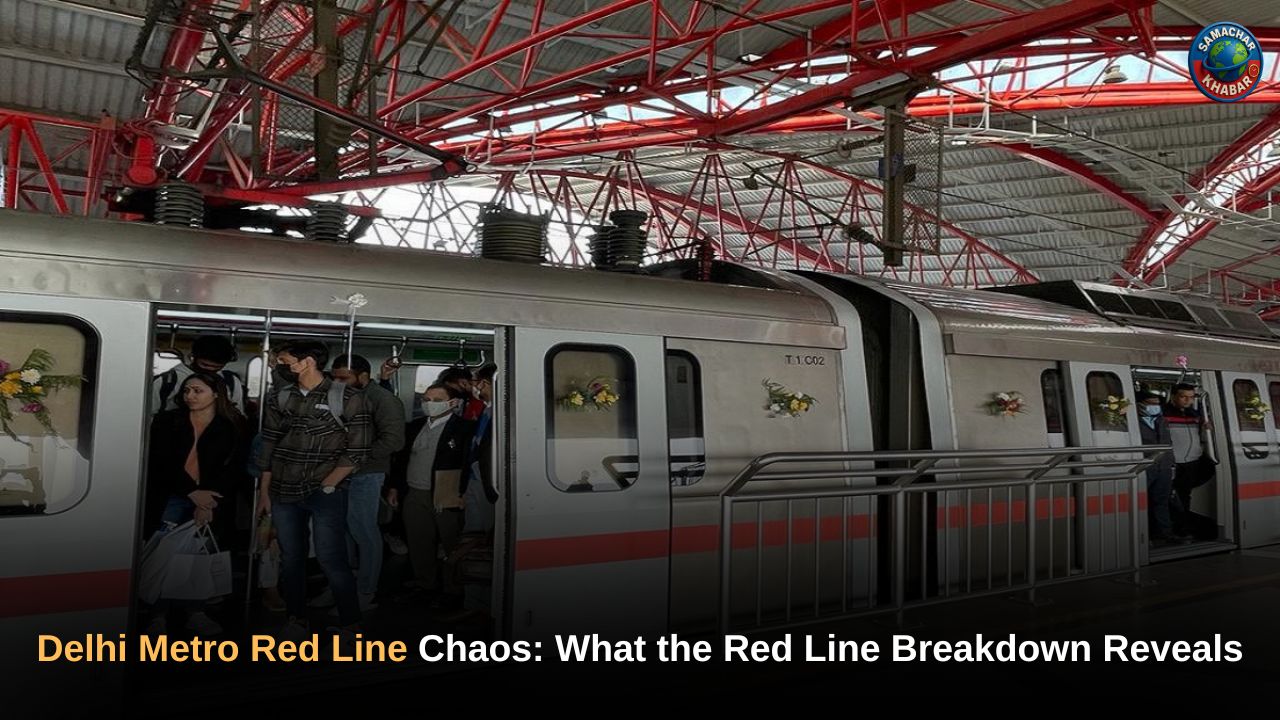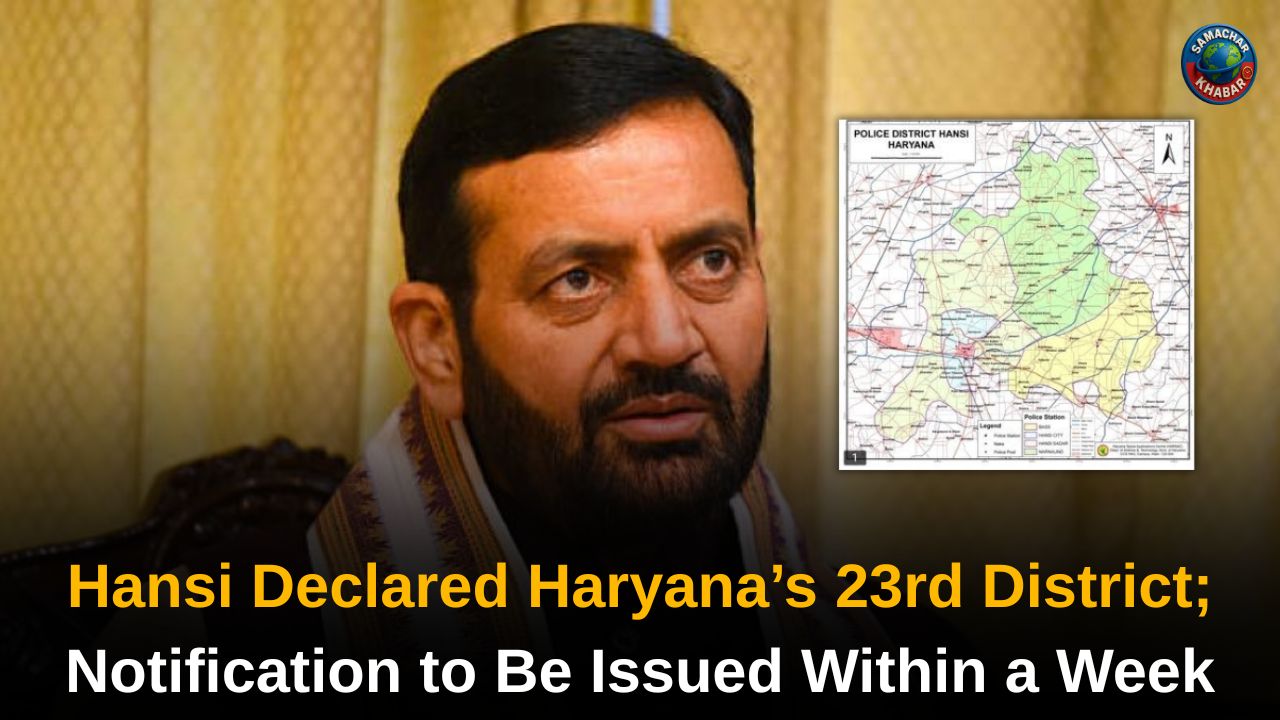Friday morning turned out to be a nightmare for thousands of commuters on the Delhi Metro Red Line, as a major signal failure disrupted operations for nearly one and a half hours. Trains stood motionless across multiple stations, especially at Rohini West, Pitampura, and Shahdara, where passengers were forced to wait endlessly or abandon their journey altogether.
The incident took place at the peak of the morning rush, around 8:15 AM, when offices and schools were opening, causing widespread chaos across the corridor connecting Rithala to Shaheed Sthal (New Bus Adda).
Key Insights: What the Red Line Breakdown Reveals
To make sense of this massive disruption, here are the key takeaways and SEO-optimized insights about the Delhi Metro Red Line breakdown that paralyzed the city’s morning movement:
- Signal failure at peak hour: The glitch appeared around 8:15 AM between Pitampura and Welcome stations, disrupting train communication with the control room.
- Trains stranded for 45–90 minutes: One train was stuck at Rohini West for about 45 minutes, while others crawled or halted at nearby stations.
- Stations closed temporarily: Heavy rush led to the temporary closure of gates at Shahdara, Major Mohit Sharma, and other stations.
- Massive crowds and frustration: Commuters waited for over an hour, with display boards showing 61–69 minutes of waiting time for the next train.
- DMRC’s rapid response: After roughly 90 minutes of repair, services were restored by 9:40 AM.
- Social media outrage: Passengers took to X (formerly Twitter) to report crowding, mismanagement, and delays.
- Impact on Delhi’s busiest corridor: The Red Line, being the city’s oldest and one of the most crowded routes, saw chaos ripple across residential and commercial zones.
How a Signal Failure Disrupted the Red Line
The trouble began when the signalling system between Pitampura and Welcome stations malfunctioned, cutting off effective contact with the central control room.
Without this communication, train movements had to be regulated manually, significantly reducing speed and eventually causing complete stoppage at certain stretches.
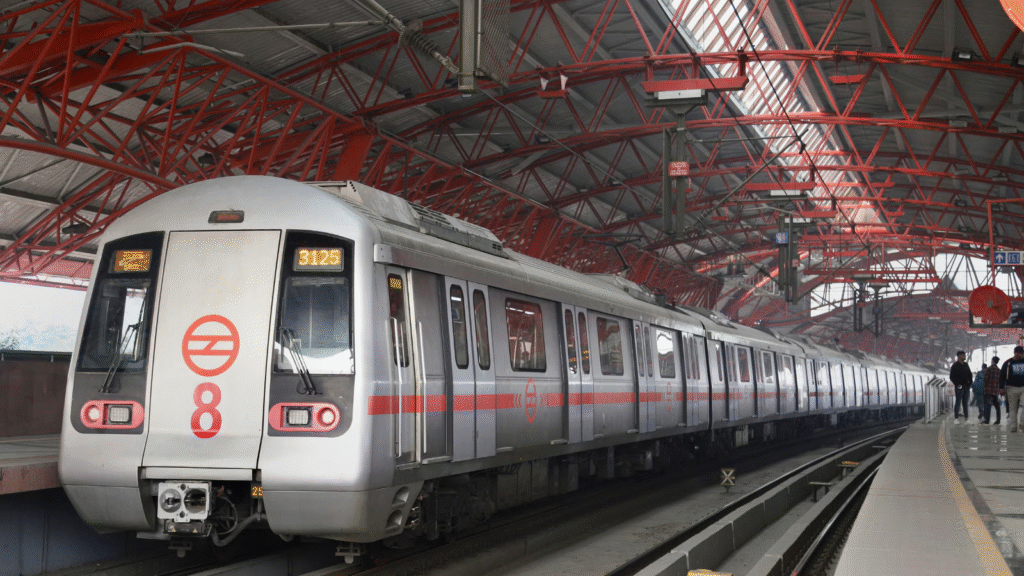
For commuters, this meant cramped coaches, anxiety, and uncertainty as announcements repeatedly informed them of “technical faults” with no clear timeline for restoration.
On the Ground: Voices of the Stranded
As the malfunction persisted, frustration erupted on platforms and on social media alike.
Commuter Kunal Tandon posted on X that “Rohini West station has seen no trains for over 30 minutes, the crowd is unbearable.”
Another passenger, Raj Srivastava, reported that “Major Mohit Sharma station gates were shut, and staff had no idea when the service would resume.”
At Shahdara, passengers complained of being trapped inside the station for long periods due to crowd control measures.
The social media timeline soon filled with photos and videos showing jam-packed platforms and queues spilling out of station gates.
DMRC’s Official Statement and Response
The Delhi Metro Rail Corporation (DMRC) confirmed that a signal failure had affected operations on the Red Line for more than an hour.
Teams were deployed immediately to identify and fix the technical glitch. Around 9:40 AM, officials announced that the fault had been rectified and that normal operations had resumed.
DMRC later issued a statement ensuring passengers that safety remained its top priority and apologized for the inconvenience caused during the morning rush.
Why the Red Line Matters So Much
The Red Line isn’t just another metro route, it’s a lifeline for tens of thousands of commuters each day.
As Delhi’s oldest and one of the busiest corridors, it connects Ghaziabad’s Shaheed Sthal (New Bus Adda) with Delhi’s heart, covering major residential and commercial hubs like Rithala, Pitampura, Kashmere Gate, and Shahdara.
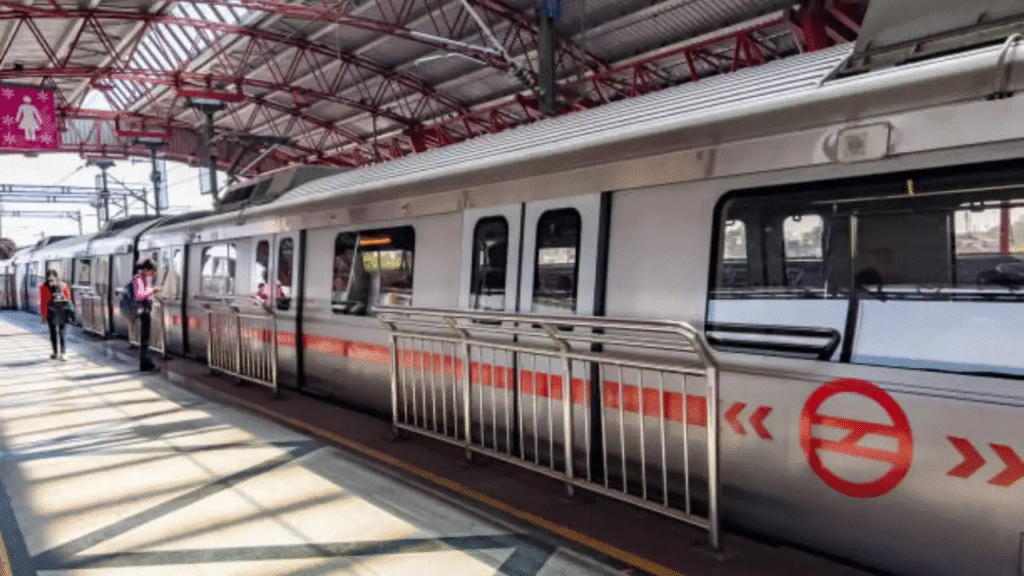
A breakdown during rush hour doesn’t just delay passengers; it disrupts office timings, business schedules, and even public confidence in the system’s dependability.
Crowds, Chaos, and Commuter Struggles
As trains stalled and information boards flashed long waiting times, stations turned into chaos zones.
Several eyewitnesses described scenes of confusion as commuters debated whether to wait or look for alternative transportation.
Auto-rickshaw and cab services saw a sudden spike in demand, while many office-goers reported late arrivals.
By the time the line reopened, most platforms had witnessed massive congestion and lingering frustration.
Recurring Concerns Over Technical Reliability
This was not the first time such an incident occurred. Just days earlier, the Blue Line had faced a similar technical glitch, leading to long delays.
Experts say such frequent faults highlight the urgent need for a stronger monitoring and maintenance system, especially for older corridors like the Red Line.
Commuters have also urged DMRC to improve real-time communication through social media and station announcements to minimize panic and confusion.
How DMRC Restored Normalcy
After the signalling failure was detected, DMRC’s technical teams worked on-site to manually reset and synchronize the signal controls.
Train pilots were instructed to proceed cautiously, maintaining safe distances between trains until the automated signalling was restored.
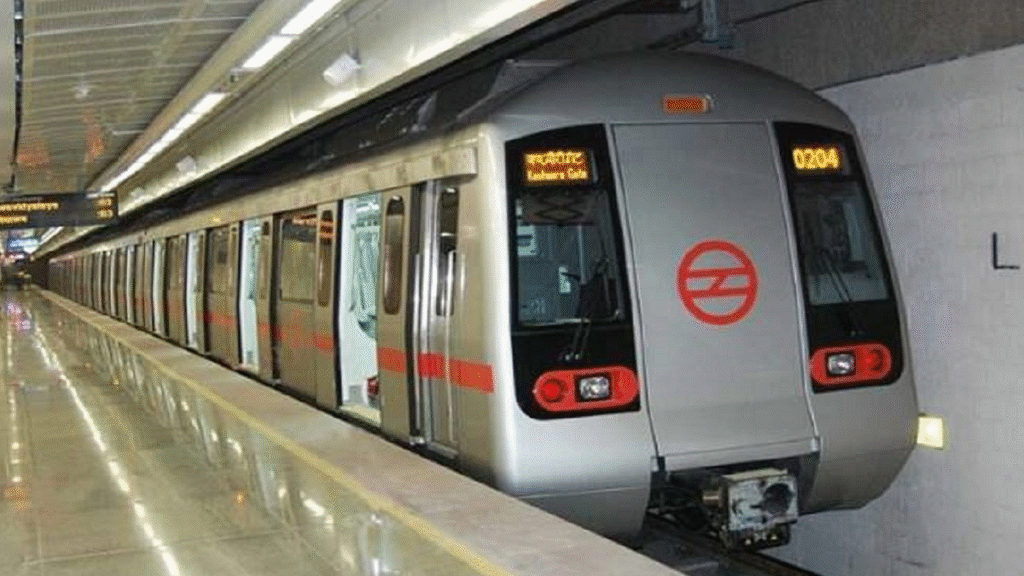
By 9:40 AM, services were declared normal, and by late morning, trains resumed their usual frequency.
Officials praised the quick response of maintenance staff and assured that corrective steps were underway to prevent such breakdowns in the future.
A Morning That Tested Delhi’s Patience
The incident served as a reminder of how fragile daily mobility in a metropolitan city can be.
From stranded passengers at Rohini West to locked gates at Shahdara, the event exposed the scale of dependency Delhi’s population has on the metro network.
While the fault has now been fixed, the Friday morning disruption will be remembered as a test of commuters’ patience and DMRC’s crisis management.
Spiritual Insight: Understanding the Real Power Beyond Human Limitations
Incidents like the sudden technical failure on the Delhi Metro Red Line remind us how limited human control truly is, despite modern technology. Every system built by humans can face faults , but the divine system of the Supreme God, as revealed by Tatvdarshi Sant Rampal Ji Maharaj, never fails.
Through His spiritual discourses, Sant Rampal Ji Maharaj Ji explains that the universe operates under eternal laws governed by the Supreme Power, and true peace or safety can only be found through Scripture-based devotion (Shastranusar Bhakti). While humans work to fix physical systems, the ultimate solution to life’s uncertainties lies in understanding the Supreme Controller who governs all creation.
To explore this profound spiritual knowledge, visit our official website: www.jagatgururampalji.org
Watch enlightening discourses on YouTube: Sant Rampal Ji Maharaj
FAQs on Delhi Metro Red Line Technical Glitch
1. Why was the Delhi Metro Red Line delayed today?
A technical fault near Rohini West Station caused a major delay on the Red Line, halting services for nearly 45 minutes.
2. Which Delhi Metro route was affected by the technical issue?
The disruption occurred on the Red Line, which runs between Rithala and Shaheed Sthal (New Bus Adda) stations.
3. How long did the Delhi Metro Red Line remain disrupted?
The Red Line services were affected for about one to one and a half hours before resuming normal operations.
4. What action did DMRC take to fix the Red Line glitch?
DMRC immediately deployed technical teams, resolved the issue, and restored Red Line metro services to normal.
5. Were other Delhi Metro lines affected during the Red Line issue?
No, only the Red Line was affected today, although the Blue Line had a similar technical glitch a few days ago.

